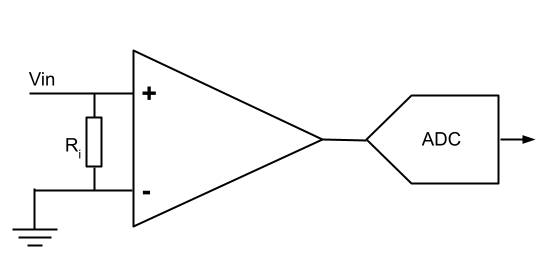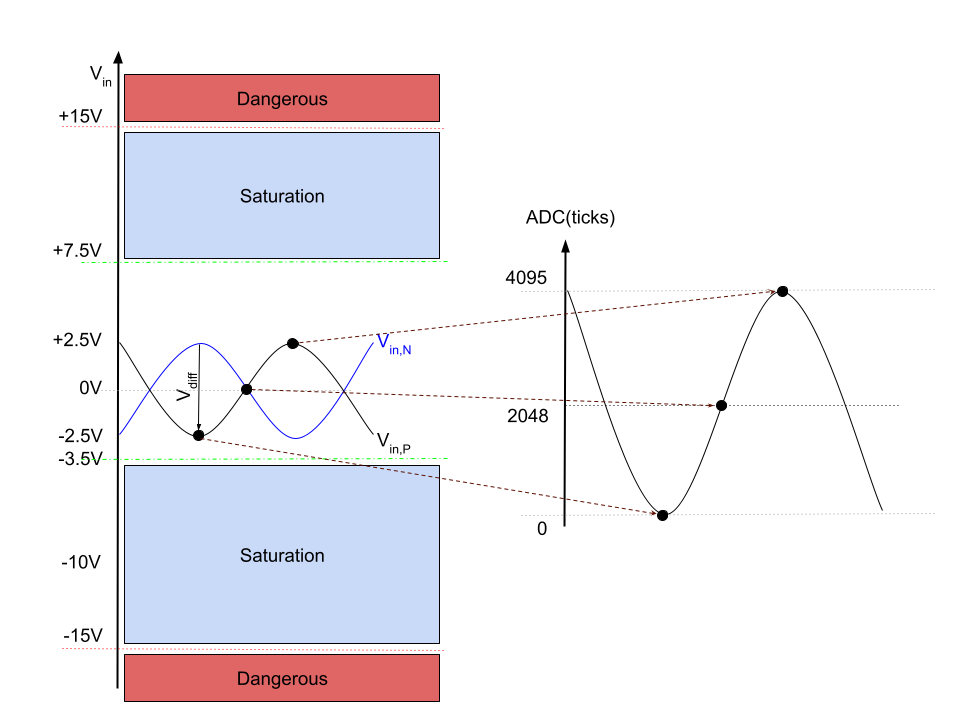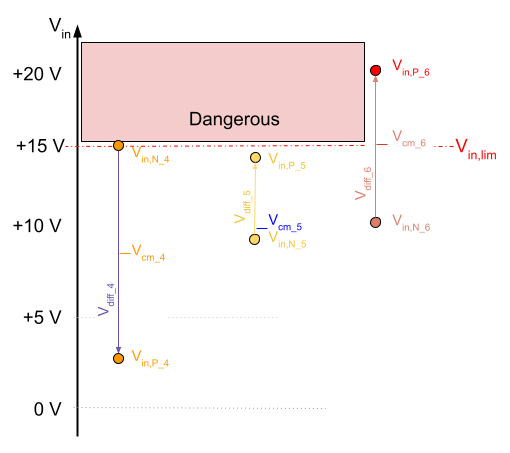- Hardware Manuals
- Commissioning and Tuning Guide
- Software Reference
- Resources
SOMANET Servo drives utilize differential and single-ended analog inputs for measuring a wide range of sensors without adding extra components. Analog sensors can be used for measuring temperature, pressure and torque, both as voltage and resistance depending on their configuration in the firmware.
With an attached voltage division circuit (which is already integrated in SOMANET Circulo) and a polynomial function in the software, the drive carries out all calculations. The calculated temperature, pressure or torque value will be submitted to the master by SDO/PDO for protection or display.
The sensor configuration depends on the used type of sensor as described in this section.
SOMANET Servo drives have different inputs to measure analog values. They are connected to an integrated ADC (Analog to Digital converter) with 12-bit resolution (0-4095 ticks).
Please refer to the hardware manuals for the Analog In specifications for SOMANET Circulo and SOMANET Node.
Analog inputs must be used (Single-Ended or Differential) for measuring analog sensors or any kind of analog voltage.
Analog sensors provide a resistance, current or voltage value and are available for pressure, temperature, torque and many other applications.
For a basic understanding of the analog inputs and signal connection concepts the terms V diff, V in and V cm need to be explained.
Single-ended inputs measure the voltage between the input signal and ground.

The input voltage needs to be scaled to the ADC ticks and the allowed voltage range.
Single-ended analog inputs are highly susceptible to electromagnetic noise.
Relevant parameters for single-ended inputs are V in, V in,lim and R i.
ADC(ticks) = 4095 if 0 ≤ V in ≤ V in,max
ADC(ticks) = 0 if V in < 0
ADC(ticks) = 4095 if V in ≥ V in,max (Saturation)
V in must be within a range of V in,min and V in,max, otherwise the device will be damaged.
The differential inputs measure the voltage between two distinct inputs.

The signals are multiplied by -1 in the source side and compared by the drain to counteract the effect of common mode noise. The advantages of a differential input is its wider input range, the possibility to measure negative voltage and the robustness against common mode noise. Therefore, they show better results in environments which are exposed to electromagnetic disturbances.

For differential inputs the values for V diff, V in,P, V in,N and V cm are important, .
V diff = V in,P - V in,N
V cm =
V in,P and V in,N are the voltages to GND
The ADC ticks are calculated by this formula:
ADC [ticks] = if V diff,min ≤ V diff ≤ V diff,max
ADC [ticks] = 0 if V diff < V diff,min
ADC(ticks) = 4095 if V diff > V diff,max (Saturation)

V in,P and V in,N must be within a range of V lim,min and V lim,max, otherwise the device will be damaged.
As a kind of reference voltage V cm is used to avoid non-linearity of the input. V cm must be within a range of V cm,min and V cm,max, otherwise the measured values will have non-linearity faults.

| Example | Vin_P | Vin_N | Vdiff | Vcm | ADC(ticks) |
|---|---|---|---|---|---|
| 1 | 0 | +10 | -10 | +5 | 0 |
| 2 | +10 | 0 | +10 | +5 | 4095 |
| 3 | 0 | 0 | 0 | 0 | 2047 |

| Example | Vin_P | Vin_N | Vdiff | Vcm | ADC(ticks) |
|---|---|---|---|---|---|
| 4 | +3 | +15 | -12 | +9 | Saturation |
| 5 | 14 | 9 | 5 | 11,5 | Non-linearity |
| 6 | 20 | 10 | 10 | 15 | Damage! |
In the Circulo products family, a dedicated temperature port is available which is directly connected to the ADC input and has a high input resistance. On this port the resistance of a temperature sensor can be measured with high accuracy.
Note
It is recommended to use the temperature input port only for measuring temperature with an RTD temperature sensor.
The signals are available in different objects, for details, please refer to the hardware manuals of SOMANET Circulo and SOMANET Node.
For details about using temperature sensors please check our System integration guide on temperature sensors.
SOMANET Node and Circulo servo drives support different types of analog inputs. These inputs support a wide range of industrial sensors, e.g. torque, temperature, position and speed but have different internal resistance, saturation values and voltage limits.